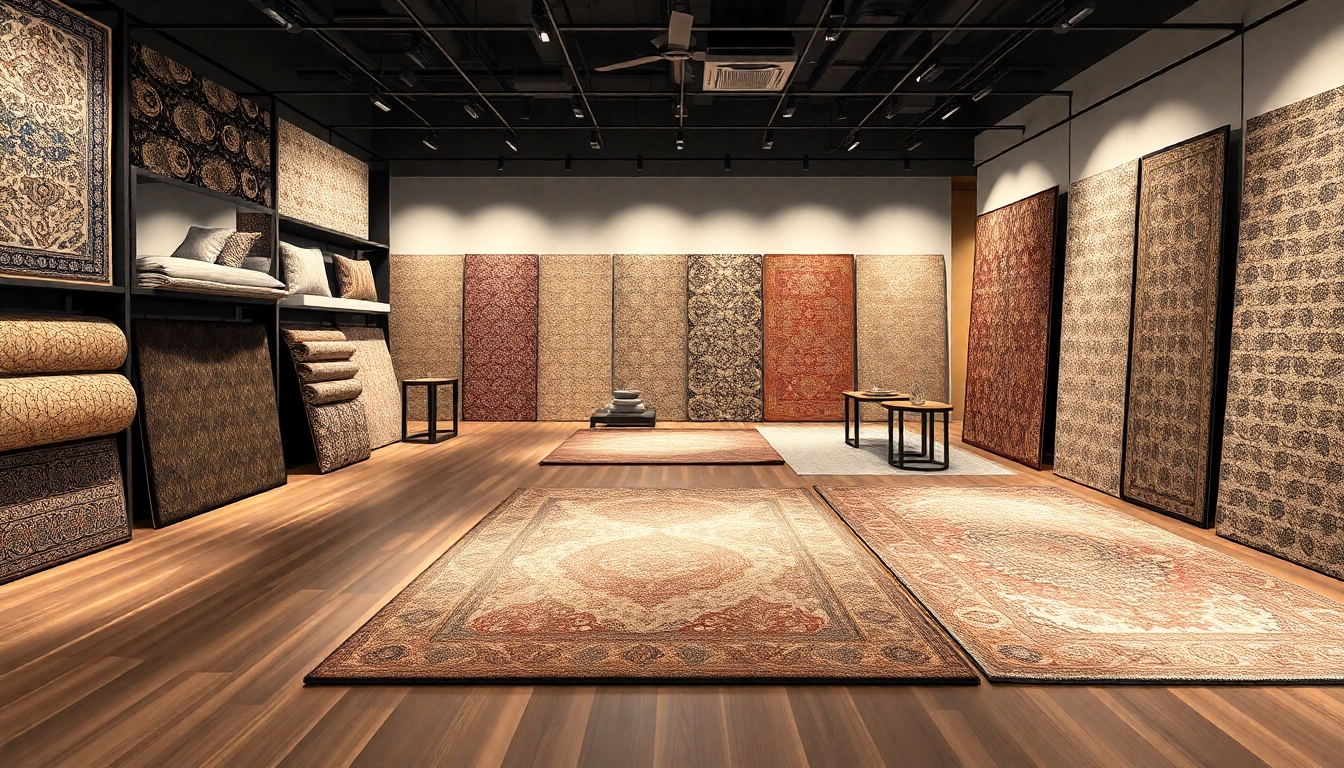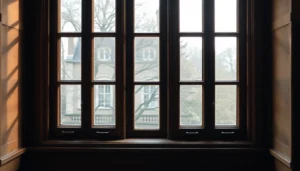Introduction to Tappeti a Milano: Styles and Trends
Milan, a city renowned for its impeccable sense of style and sophisticated design, boasts a rich tapestry of rug and carpet offerings that reflect its vibrant cultural and aesthetic heritage. Whether restoring a historic apartment or elevating a modern office space, choosing the right Tappeti a Milano is essential to creating an environment that exudes elegance and comfort. The Milanese approach to rugs blends traditional craftsmanship with contemporary trends, resulting in a diverse palette of designs suitable for every interior personality.
In this comprehensive guide, we will explore the prevalent styles, evolution, and current trends that define Milanese rug culture. From iconic Persian designs to modern geometric patterns, understanding these elements helps shoppers and interior designers alike make informed decisions when selecting the perfect piece for their space.
Overview of Popular Rug Designs in Milan
Milan’s design scene is a melting pot of traditional and innovative styles. Classic Persian and Oriental rugs, known for their intricate patterns and rich history, remain a staple among collectors and interior aficionados. These rugs often feature floral motifs, medallions, and symbolic iconography that reflect centuries-old artisan techniques.
Conversely, modern and contemporary rugs have gained significant traction. Clean lines, minimalistic geometric patterns, and bold colors dominate the Milanese aesthetic in modern homes and offices. For example, art-oriented rug retailers like Artorient Milano showcase a vast selection of modern, floral, and ethnic designs, reinforcing the city’s openness to blending styles.
Kilims and flatweaves are also popular, especially in casual or bohemian interiors. These woven rugs, often with bold, simple motifs, serve as versatile pieces that add texture and visual interest without overwhelming a space.
Additionally, vintage and distressed rugs are highly sought after for adding character and history. Vintage Persian and Caucasian pieces can be found in boutiques and antique markets, aligning with Milan’s appreciation for timeless quality infused with a contemporary edge.
The Evolution of Milanese Rug Styling
Over the decades, Milan’s approach to rug selection and styling has mirrored broader trends in fashion and interior design. The post-war era saw an influx of oriental and Persian rugs, imported as symbols of luxury and artistic mastery. These pieces quickly became a hallmark of refined Milanese interiors.
The 1960s and ’70s introduced bold experimentation, with native Milanese designers integrating geometric and abstract patterns into modern living spaces. This period laid the groundwork for the eclectic approach that characterizes today’s rug landscape.
In recent years, Milanese décor has embraced sustainability and craftsmanship. There’s an increased focus on authentic, handcrafted rugs that support local artisans and traditional weaving techniques. Shops such as Cohen Tappeti have championed these values, offering curated selections of hand-knotted pieces with stories rooted deeply in cultural heritage.
The trend towards personalization is also evident. Consumers seek bespoke rugs tailored in size, pattern, and color, reflecting individual tastes and interior themes. This shift towards customization signals a move away from mass-produced carpets, favoring artisanal and unique pieces that enhance identity and elegance.
Recent Trends in Tappeti Selection
The current vogue in Milan favors a mix of old and new—vintage Persian rugs paired with sleek modern designs. This eclectic blend creates layered, inviting spaces that tell a story. Sustainable materials like organic wool, hemp, and recycled fibers have also become increasingly popular, aligning with Milan’s eco-conscious mindset.
Color palettes now lean toward muted earth tones, soft pastels, and metallic accents, which enhance the overall elegance without overpowering the interior design. Rugs with subtle patterns or monochrome hues are often chosen for minimalistic contemporary settings, while bold, vibrant patterns are favored in maximalist and bohemian spaces.
Pattern innovation is also flourishing. Digital printing and innovative dyeing techniques enable the creation of bespoke patterns that maintain the craftsmanship aspect while offering fresh, contemporary designs. This technological integration ensures Milan remains at the forefront of rug design and customization.
Additionally, there’s a growing interest in vintage kilims and tribal rugs from regions such as Anatolia, the Caucasus, and Central Asia. These pieces infuse spaces with a worldly, authentic feel, resonating with Milan’s appreciation for global artistry.
How to Choose the Ideal Rug in Milan
Assessing Size, Material, and Style
Selecting the perfect rug begins with understanding the spatial dimensions. Measure your area carefully, considering furniture placement and traffic flow. For large living rooms, oversized rugs can serve as a centerpiece, anchoring seating arrangements. For smaller spaces, smaller or abstractly patterned rugs prevent visual clutter.
Material choice impacts durability, maintenance, and aesthetic. Wool remains the traditional favorite for its softness and resilience, suitable for high-traffic areas. Silk rugs offer a luxurious sheen and are ideal for decorative purposes in less trafficked rooms. Natural fibers like jute or hemp provide eco-friendly options perfect for casual or rustic interiors.
Style compatibility is crucial. Modern minimalist homes benefit from simple, monochrome or geometric rugs, while classic interiors flourish with detailed Persian or oriental carpets. Harmonizing the rug with existing furniture, wall colors, and decorative elements ensures a cohesive look.
Matching Tappeti with Interior Themes
Interior themes guide rug selection significantly. Contemporary interiors favor rugs with clear geometric patterns and neutral palettes. Romantic or vintage-inspired spaces benefit from floral or intricate motifs, often in softer hues. Industrial spaces look for rugs with bold, minimal designs, possibly with distressed finishes or raw textures.
It’s important to create balance—if your furniture is neutral, a patterned rug can serve as an eye-catching focal point. Conversely, in space filled with vibrant colors or patterns, choosing a more subdued rug prevents visual overload.
Tips for Buying Authentic and Handcrafted Rugs
Ensuring authenticity involves verifying the origin, craftsmanship, and materials. Always look for certification or provenance details when buying high-end rugs. Direct dealings with reputable shops like Zal Tappeti Milano or specialized art and antique stores ensure genuine, handmade pieces.
Expert tip: Always inspect the rug’s knot density and craftsmanship quality. Hand-knotted rugs typically have thousands of knots per square inch, indicating durability and premium value. Additionally, ask for detailed information about the dyeing process—natural dyes are a hallmark of high-quality, authentic rugs.
Where to Shop for Tappeti a Milano
Top Showrooms and Physical Stores
Milan hosts several distinguished showrooms that showcase an extensive range of both traditional and modern rugs. Artorient Milano is famed for its wide selection, including Persian, Oriental, and contemporary designs, with expert staff ready to assist in choosing the perfect rug.
Outlet Tappeti offers a curated selection of high-quality rugs at competitive prices, both online and in their physical stores. Their emphasis on premium, authentic pieces makes them a top choice for discerning buyers.
Best Online Retailers and Outlets
Digital platforms have made accessing a broader spectrum of options easier. Websites like Zal Tappeti Milano and Tappeti.it provide comprehensive catalogs, detailed descriptions, and virtual consultations to refine your search from home.
Services: Custom Rugs, Restoration, and Maintenance
Many Milanese suppliers also offer bespoke rug design services, allowing clients to craft unique pieces aligned with personal style. Restoration and cleaning services are vital for preserving the longevity and beauty of your investment. Shops like Art Tappeti specialize in expert cleaning, repair, and restoration, utilizing traditional techniques and eco-friendly products.
Maintaining and Restoring Your Tappeti
Cleaning Techniques for Different Materials
Proper maintenance begins with understanding the material composition. Wool rugs should be vacuumed regularly with gentle suction, avoiding harsh brushes. Spot cleaning with mild detergents is recommended for minor stains. Silk rugs require delicate handling, often best left to professionals.
Natural fiber rugs like jute or hemp benefit from periodic shaking and careful vacuuming to remove dust. Avoid excessive moisture, which can cause mold or color bleeding.
Professional Restoration and Repair Tips
Over time, even the best rugs may suffer wear or damage. Professional restoration involves knot repair, color restoration, and reweaving. This process requires skilled artisans to preserve the original craftsmanship. Regular inspections help catch issues early, preventing costly repairs.
Long-Term Care for Your Investment
To ensure longevity, rotate the rug periodically to prevent uneven wear, protect it from direct sunlight to prevent fading, and use rug pads to reduce compression. Keeping pollutants and high humidity away also safeguards the fibers and dyes.
Enhancing Living Spaces with the Right Tappeti
Design Ideas for Modern and Classic Interiors
A carefully chosen rug can transform a room’s ambiance. In modern interiors, select rugs with geometric or abstract patterns in neutral shades to complement a sleek aesthetic. For classic design themes, richly patterned antique Persian or Oriental rugs bring warmth and history.
Color Coordination and Placement Strategies
Use color theory principles to select rugs that harmonize with your space. Light-colored rugs expand small rooms visually, while darker tones create intimacy. Layering rugs of different sizes can add depth, and placing a larger rug beneath furniture anchors the space.
Creating Focal Points with Unique Rugs
Unique, handcrafted rugs act as focal points, drawing attention and setting the mood. Position vibrant or intricately designed rugs in central locations like living rooms or dining areas for maximum impact. Pairing eclectic rugs with minimalist furniture enhances visual interest.



